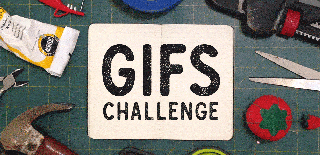Introduction: Screwdriver Handle
I've seen people online take a cheap, store bought screwdriver and make a new handle for it, replacing the uncool plastic one that it came with. So, after I got a few of these screwdrivers from Harbor Freight, I thought it was finally time for me to see what I could do. I made this as a gift for my dad, and it seemed like he liked it quite a bit. So, I feel like this is a good gift idea, and I may make a couple more to have ready for the holidays.
Step 1: Dismantle Screwdriver
This particular screwdriver that I got was super easy to dismantle. I ran the handle through my band saw, but you could obviously use any type of saw to cut the handle. There's a little metal piece that holds the insert in place. It just takes a couple of minutes to extract this metal piece and set it aside for later. At the end you can epoxy this metal piece into the handle that you make to finish the project.
Step 2: Start Preparing Your Blank
For my blank, I wanted to use several different contrasting woods. I was just using little pieces of scrap wood that I didn't want to waste, so I began by running them through the table saw, just to get some flat edges. I then cut the all to equal size and glued them up into little "sandwiches" and let them sit for a while. I then cut my "sandwiches" into little cubes. The cubes were then glued back together, but switching their orientation to make sure each cube was placed opposing the last.
Step 3: Finish Up Blank
After the cubes had time to sit, I would run the entire glue-up over the belt sander to make sure it was completely flat. Then, once again, I glued the stacks of cubes together. To try to be clear, I had four stacks of cubes that I glued up into two halves. The halves were then glued together to make one blank.
Once it was all one piece, I cut the two sides flush on the miter saw. Then I made sure to mark the center on each end, and I went ahead and cut off all four corners on the band saw to save some time at the lathe.
Over at the drill press, I drilled a hole the exact diameter of the insert that we removed earlier. I made sure and put tape on the drill bit at the depth I was shooting for, so I would know where to stop drilling. Then I switched to a smaller bit and drilled out the entire cavity in the handle for the insert to go down into. I used the screwdriver itself to check and make sure it was deep enough.
Step 4: Turn and Finish Handle
With the blank all ready, I put it on the lathe and turned it round. I wanted to keep this handle fairly simple, so I had to practice quite a bit of restraint, because it's in my nature to over complicate things. After it was to the shape I wanted, I noticed a small gap between a couple of pieces, so I filled it in with epoxy and let that cure.
Then I sanded through all the grits of sandpaper that I have. I can't stress enough the importance of sanding. When you think you've sanded enough, sand some more.
I put on some paste wax before removing it from the lathe, and gave it a little while before buffing it to a nice shine.
After your handle is complete, all you have to do is epoxy in the little piece of metal. I covered it in epoxy and then had to tap it into place with a mallet. It was a super tight fit and after fifteen minutes or so, it was ready to go.
Just insert the screwdriver and your finished!

Runner Up in the
GIFs Challenge 2017

Participated in the
Fix It Contest













